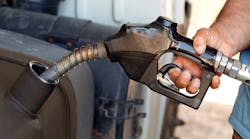Latest from Fleet Management
Software Showcase
Strategizing Fleet Acquisition
Sponsored
With fuel prices again rising on tensions in the Middle East, everyone who runs a fleet of trucks is eyeing the news and estimating the impact. Of course fuel prices depend on other factors as well, and in a state-by-state comparison it appears that state gas tax policies play a pivotal role. A couple of graphics from Statista illustrate the impact of state-level taxes on gasoline and diesel fuel prices.
Pennsylvania had one of the highest taxes on gas in the United States at 58 U.S. cents per gallon. In comparison, Alaska has one of the cheapest state gas taxes as of January 2019, at 14.7 U.S. cents per gallon. The average gasoline tax rate in the United States sat at 27.6 cents per gallon with diesel taxes averaging 27.3 cents per gallon in 2017. State taxes on fuel were first introduced in Oregon in 1919 and the rest of the states followed suit within the next decade.
Out of refining costs, retail markup, and transportation costs, federal and state taxes are the strongest determiner for how much fleet owners pay for gas. These taxes are generally invested back into the construction and repair of road infrastructure. The federal government also places a tax on gasoline sold in the United States but almost every gasoline tax imposed by the states themselves is higher than this federal rate. Higher gasoline taxes may also affect driving habits, as those who live in states with higher gas taxes tend to drive less when other options are available.
The graphic shows a ranking of the leading states based on the lowest effective gas tax rates and gas prices in the United States as of January 2019. During this time, Missouri had the second lowest gas tax at 17.4 U.S. cents per gallon and the lowest gas price at 1.88 U.S. dollars per gallon.




